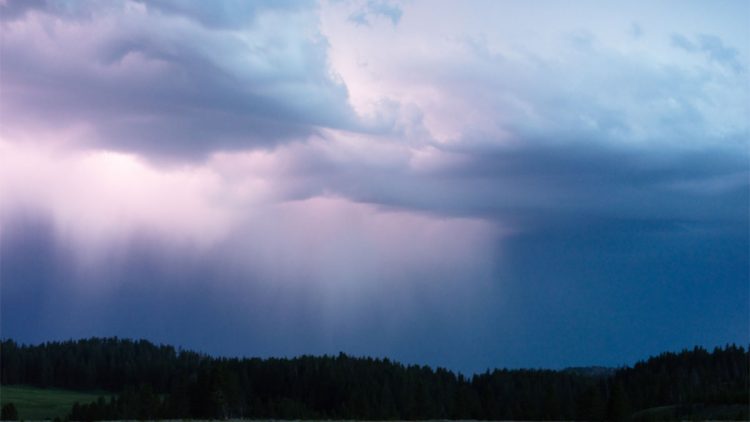Preparing Your Trees For The Arizona Monsoon Season
PREPARING YOUR TREES FOR THE ARIZONA MONSOON SEASON
GET A FREE ESTIMATE TODAY!
In Arizona, the period from June 15th through September 30th can be defined as the summer monsoon season. This time of year usually brings extreme heat, which is usually followed by excessive moisture in the air that causes vivacious thunderstorms brought on by very fast winds. Thunderstorms present a lot of hazards that usually strike quickly and with violent force. When preceded by heavy rain, a tree will be even more susceptible to heavy winds. Heavier rains can cause over-saturation of soil, so a tree with healthy roots may have a weaker hold. In some cases, the bulk of the root system can become exposed if the tree falls over. Regardless, there is a lot of preparation you can and should do to hinder potential storm damage to your trees. The best thing you can do is pay attention – watch your trees when heavy winds or rain is coming, and take the proper steps as needed.
BASIC TIPS FOR AVOIDING STORM DAMAGE
Water, mulch, and fertilize your trees correctly and regularly, healthier trees are going to withstand the elements a lot better. This will also help prevent the soil from becoming compacted. Prune annually or semi-annually (sometimes every two to three years, depending on the type of tree) even while they are still young. Having your trees trimmed professionally by someone who understands healthy tree structure is your best thing to avoid problems. Incorrectly pruned trees can lead to splitting limbs and trunks in higher winds.
Proactively take of your trees – any money you spend on the preventive maintenance of your trees will be a lot less costly than replacing them, especially if they cause damage to cars, roofs, or structures when they fall. Clean your yard of any leaf debris or landscaping trash. This will help avoid more work for you when high winds blow debris all over your yard and will help prevent your pool filters from becoming obstructed and burning out.
STAKE YOUR TREES
Staking your trees provides younger trees with the support it needs until its trunk is strong enough to hold the weight of the tree. A lot of trees won’t need to be staked for longer than a year, but stakes should be left for a minimum of one full growing season. When the tree can stand on its own, you can remove the stakes.
HOW TO PROPERLY STAKE A TREE:
- Use 8-foot stakes or lodge poles. They should be at least 6-8 feet tall and around three inches in diameter.
- Figure out the general direction of the wind and position the stakes precisely opposite one another, about 2 feet from the stem, staying in line with the wind.
- Force the stakes vertically at least 2 feet into the soil. Try and keep the stakes the same height above ground. When completed, stakes should stand erect at about 4 feet.
- Cut two pieces of pliable wire, each measuring around 5 feet long. Use rubber (or use an old garden hose) to create 2, 18-inch lengths. Slide the lengths over the wire and wrap the hose around the tree to help safeguard the trunk from the wire. Draw equal lengths of the wire parallel to the ground and attach them to the top of the stakes. Twist the wires together on the outside of the stake and make sure the wire is nice and taut – clip off any leftover with wire clippers.
TREE MAINTENANCE AND CARE
- Straightforward care and maintenance can make your trees beefier during periods of rough weather, here are a couple of things to watch out for:
- Dead wood is unstable because it is brittle, and can’t give or ben under stress as healthy, living tree branches can.
- Cracks can be evidence of potential branch failures, where there will be splitting sooner or later, so prune as a preventative step to stop more cracking.
- Decay is a clear indicator of fungal growth or hollow cavities and is a sign of structural weakness.
- Pests, like the Palo Verde bore, can increase a tree’s health problems, but they typically target trees that are already unhealthy.
Can you see the sky through the tree? Keeping your trees thin is a very important thing to do to “storm-proof” your trees. Sometimes the thicker a tree is, the more vulnerable it is to damage in heavier winds. Even for a tree that is perfectly healthy, if its foliage is overly dense it can pose a safety hazard during inclement weather. A dense canopy won’t allow the wind to pass through easily, and the ability to withstand the wind can cause branches to snap or even bring the whole tree down. This particularly applies to weight at the ends of its branches, which is why pruning only the lower parts of the branches is not enough. The leaves will grow back as the tree endures the monsoon.
TREE CARE & REMOVAL SERVICES PHOENIX
Phoenix Trim-A-Tree offers tree removal services in Phoenix, Arizona. For tree pruning or tree trimming in Scottsdale, Mesa, Tempe or Chandler. Contact us today!

